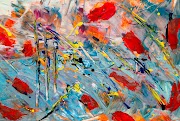If you are new to the art world, don’t panic; the core aspects are easy to understand
What do we mean when we discuss the principles and elements behind artworks? It seems like a tricky question initially – it’s undeniable that a great many skills are required to turn an idea into the art for sale in a modern gallery.
And yet, it didn’t take much research for me to become at least somewhat confident with regards to the basic principles which underpin the construction of seemingly all types of art.
Such principles aren’t much use without the elements from which they are formed, however, so let’s begin by discussing the elements of art before moving on to the principles which define how they are used.
Part One: The Elements of Art
What do you see when you look at a painting? Of course, which painting you choose to look at will determine which element springs to mind first, but for me, there was one simple answer: form.
· Form
The reason my first thought related to the form of the painting was that what I was seeing on the screen was a two-dimensional representation of a three-dimensional object. Creating this illusion requires mastery of perspective and an ability to accurately draw or paint what you can see with your eyes.
Of course, there are other forms of art as well as paintings – take a sculpture, which could be intended to represent the form of a real object or could be an abstract representation of something that does not exist in the real world.
However you choose to look at it, the form of any artwork is at the very heart of the piece.
· Lines
When you paint or draw you represent your intentions using lines. It is these lines which can convey perspective, creating boundaries between different elements of a piece. Lines are also used to indicate form via a technique known as “hatching”. Taking this a step further, “crosshatching” is the technique of overlaying multiple sets of lines at different angles in order to create tone. This technique can contribute significantly to the texture of a piece, explained below.
· Colors
Color has to be used in one way or another – whether it be black on a white background, a series of grayscales, or a full color piece. Colors can be manipulated through their Hue (usually defined as being the primary color), it’s Intensity - whether it is bold and bright or faint and dull – and by Saturation, which is increased or decreased by adding white or black to the existing color.
· Shapes
Shapes are limited to two dimensions, at least in the context of artwork produced on a two-dimensional surface. Shapes are usually enclosed, but may also use the edge of the piece as a boundary.
· Use of Space
A sense of depth requires effective use of the available space. Most pieces will usually have a subject, which represents the positive area of the work, whilst the background is defined as negative space. The use of space is often defined by the other elements described above, so consider this a rather simplistic definition.
· Textures
Imagine reaching out and touching a painting with your finger (don’t do this – you’ll probably be thrown out of the gallery if you do!) – what texture would you expect to feel? This isn’t an accident. Artists will usually try to impart a feeling of texture into the different sections of their work, and it adds significant depth to many pieces.
Part Two: The Principles of Art
So you have your toolbox of elements, now you have to put them to work to create your next artwork. This is where style meets substance. The core principles agreed by many artists are rhythm, harmony, balance, contrast, movement, proportion and variety, but there are many more, especially as you move into more modern forms of art such as abstract.
· Rhythm
Many artworks have an obvious rhythm to them created by the stroke of the artist's brush. Sometimes, it is also the variety of the piece or repetition of certain elements that work together to create rhythm. Many forms of music would be nothing without rhythm; artwork is much the same.
· Harmony
Artists will often try to repeat elements within their piece, but without making them look and feel similar at the same time. Monotonous pieces are rarely admired; chaotic ones even less so. Harmony is achieved when you find that perfect combination of both.
· Balance
Many artists struggle to find balance when they first begin to create pieces; symmetry seemingly represents perfect balance, but asymmetry somehow adds more to a piece via a sense of stability and equilibrium. It’s a hard concept to master, but an essential principle nonetheless.
· Contrast
Musical pieces use contrast to great effect; this is why a crescendo or a guitar solo works so well as part of a larger score. The areas of contrast in an artwork will instantly draw the viewer’s eyes. Deliberately overstating contrast highlights the differences between different elements, and is an extremely effective technique.
· Movement
Because artwork doesn’t move, artists need to work hard to create a feeling of movement by guiding the viewer’s eyes around the piece. Varied lines, a mixture of styles, repetition of elements in different sections of the piece can all contribute to this kind of movement.
· Proportion
We talked about perspective in the form and shape sections of our “Elements” part above. You can also think of proportion as a principle, too; the relationship of the various elements to one another and the piece as a whole.
· Variety
Finally, using different colors, shapes, and sizes within the same piece will contribute greatly to achieving the balance we discussed earlier on. Make great use of contrast and diversity, and you’ll soon find you begin to recognize variety in your work.



















.jpg)



.jpg)




0 Comments